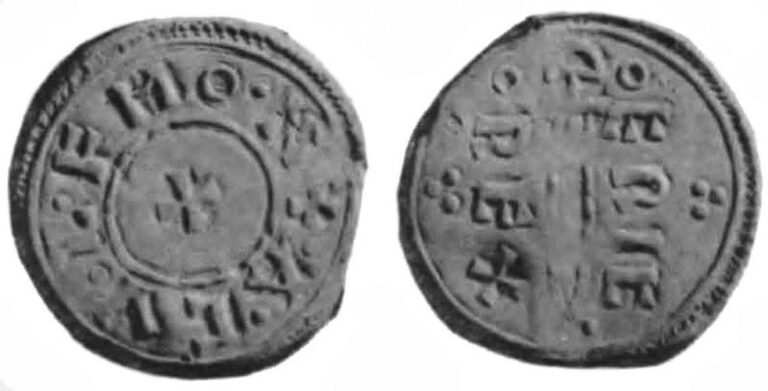Dive into the tumultuous world of Eric Bloodaxe, a real-life Viking whose dramatic saga is as riveting as his fearsome name suggests. Explore the rivalries and power plays that etched his legacy in history.
Some nicknames are endearing, some are a bit quirky, and some are downright frightening. The man we are telling you about today had a nickname that falls in the third category: Eric Bloodaxe.

He may sound like a fictional character straight out of a paperback novel, but Eric Bloodaxe is an all too real person from Viking history. So how did he earn such an intense moniker?
Let’s find out together as we unravel the real-life saga of Eirik Haraldsson, also known as Eric Bloodaxe: a man whose story is just as riveting as his name suggests. But hey, no spoilers just yet–scroll on to uncover the tale piece by piece.
Born into royal intrigue
So, first things first, where does this story fit into the Viking Age timeline? Eric Haraldsson was born around the year 895, the son of King Harald Fairhair (Harald Hårfagre) and Queen Ragnhild Ericsdatter.
Harald had quite a few kids–over 20 by some accounts–but Eric had a special place among them.
What made Eric unique among his siblings is that he was the only one of Harald’s sons who was born to a queen. This little fact nudged him a tad higher in the pecking order.

King Harald knew that having so many male heirs could spell trouble, and to keep the peace, he made sure that each and every one of his sons would get royal titles and land in their own separate areas.
He did favour Eric though, and made sure he would be one step above all his siblings in terms of authority.
In the last years of his life, Harald even shared power with Eric, making him his co-regent. Evidence suggests that the way power was divided following Harald’s death suited neither the brothers nor Eric himself, and a bloody period followed in which many of the brothers lost their lives.
Details are fuzzy, but we do know that the brothers did not die alone – a large number of their fighters were killed with them in battle with Eric’s forces. It is that murderous rampage that earned Eric Bloodaxe his gory nickname.
Eric Bloodaxe’s reign in Norway
Eric was king of Norway for just around five years, and that includes the time he shared power with his father. By himself, he ruled for 2-3 years.
As is the case with many historical figures of that time period, we know little about what he did, and what we do know is clouded in uncertainty. Few Viking sagas tell us about him, and the ones that do don’t agree with each other.

A poem by Glum Geirason, which among other things dealt with Eric's Viking expeditions, is unfortunately lost. Another by Egil Skallagrimsson, survived, but provides no specific details about events in Eric's history – only vivid descriptions of battles and general combat.
According to the sagas, Eric was expelled from Norway because he continued his father's tough policies and was seen as a tyrannical king.
The battle he fought against his brothers also reportedly caused resentment (who knew people don’t enjoy being ruled over by a bloody tyrant?).
His successor as Norwegian king was his half-brother Håkon, who especially relied on the Earl Sigurd Grjotgardsson of Lade–incidentally, Lade is a Trondheim neighbourhood known today mostly for its shopping mall. This line of succession suggests that Eric had conflicts with Sigurd.
But the sagas vary on whether Håkon or Sigurd was the most active during the power shift. The image of Eric as an oppressor is particularly evident in Egil's Saga due to the animosity between the king and the author.
Many of Egil's verses about Eric and his sons are not kind, labelling him as “people's oppressor” and “lawbreaker”. At the same time, in one verse, Egil implies that it's Gunnhild (Eric’s wife) who is the evil spirit behind the wrongdoing.
Eric Bloodaxe: King of Northumbria
During his 20 year exile from Norway at the end of his life, Eric Haraldsson was King of Northumbria, England, ruling from the city of York.

It’s not clear exactly when this happened, as the various sources differ on the specifics, but he was king in York for at least two to three years, maybe longer (with a possible interruption in the middle of his reign).
We do know for sure that he was king there at some point though, because the sagas say so and because coins were found inscribed with the mention “Ericus Rex” (Rex being Latin for “king”).
Eventually, Northumbria was taken over by Wessex king Eadred, a previous ruler of the area who had never been too hot on Eric taking power. Eric Bloodaxe died in 954 or thereabouts.
Eric Bloodaxe’s successors in Norway
Meanwhile, in Norway, Eric’s wife Gunnhild, whom we mentioned earlier, was hard at work trying to make sure one of her sons would ascend to the throne.
While Eric was busy outside of the country, she was scheming to support her sons’ claim to the throne in opposition to Håkon the Good and Sigurd the Earl of Lade – incidentally, “the Earl of Lade” (Ladejarlen in Norwegian) is now a neighbourhood pub in Trondheim.
Their efforts succeeded, and Eric’s son Håkon became king in 961, with the support of Danish king Harald Bluetooth. This is the very same Bluetooth who would much later be immortalised by having a wireless tech standard named after him.
After the death of Eric Bloodaxe, it is said that his widow Gunnhild commissioned an unknown skald (poet) to write a grand poem about him, titled “Ericsmál”. The poem depicts Eric’s entrance into Valhalla after his fall.

Historians are not convinced about its authenticity however. They suspect it might have been written much later and modelled after a different poem that was actually about his son Håkon.
Eric Bloodaxe: A fantasy novel
If you’d like to stay a bit longer in the Eric Bloodaxe universe, you could pick up a copy of American writer Poul Anderson’s novel Mother of Kings, published in 2001. The book tells the story of Gunnhild, Eric’s wife, and is largely based on Egil’s Saga.
Be aware though that this is not historical fiction. The novel takes at face value the saga’s contention that Gunnhild had been taught magic by two Finnish wizards, so it falls into the historical fantasy category.
The novel describes Gunnhild as committing several morally questionable acts, again based on the information contained in the Sagas. The author does, however, explain her point of view and her reasons for acting as she did.
Who is your favourite figure from the Viking Age? Have you seen any good Viking-related shows that you would recommend? Let us know in the comments.

